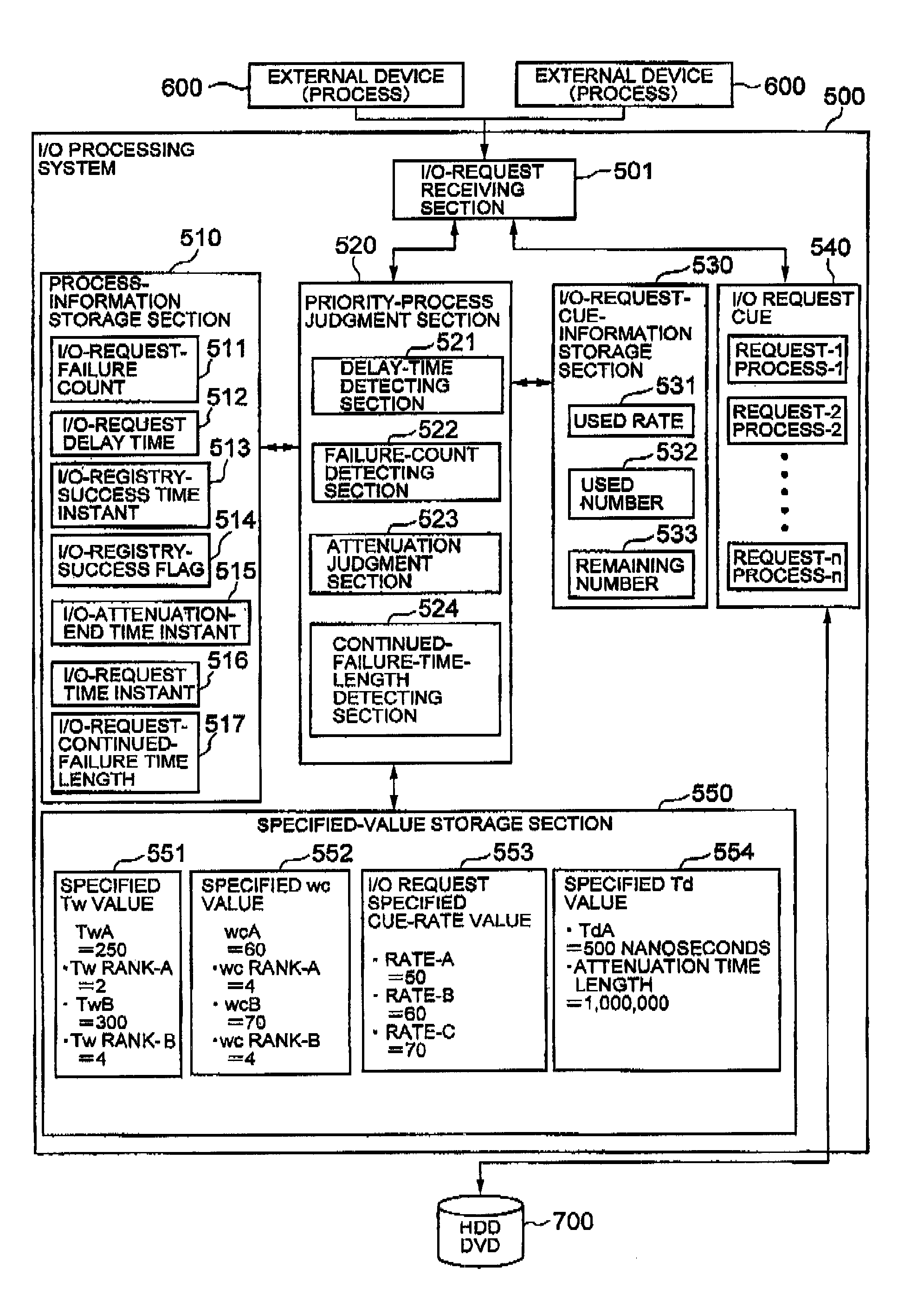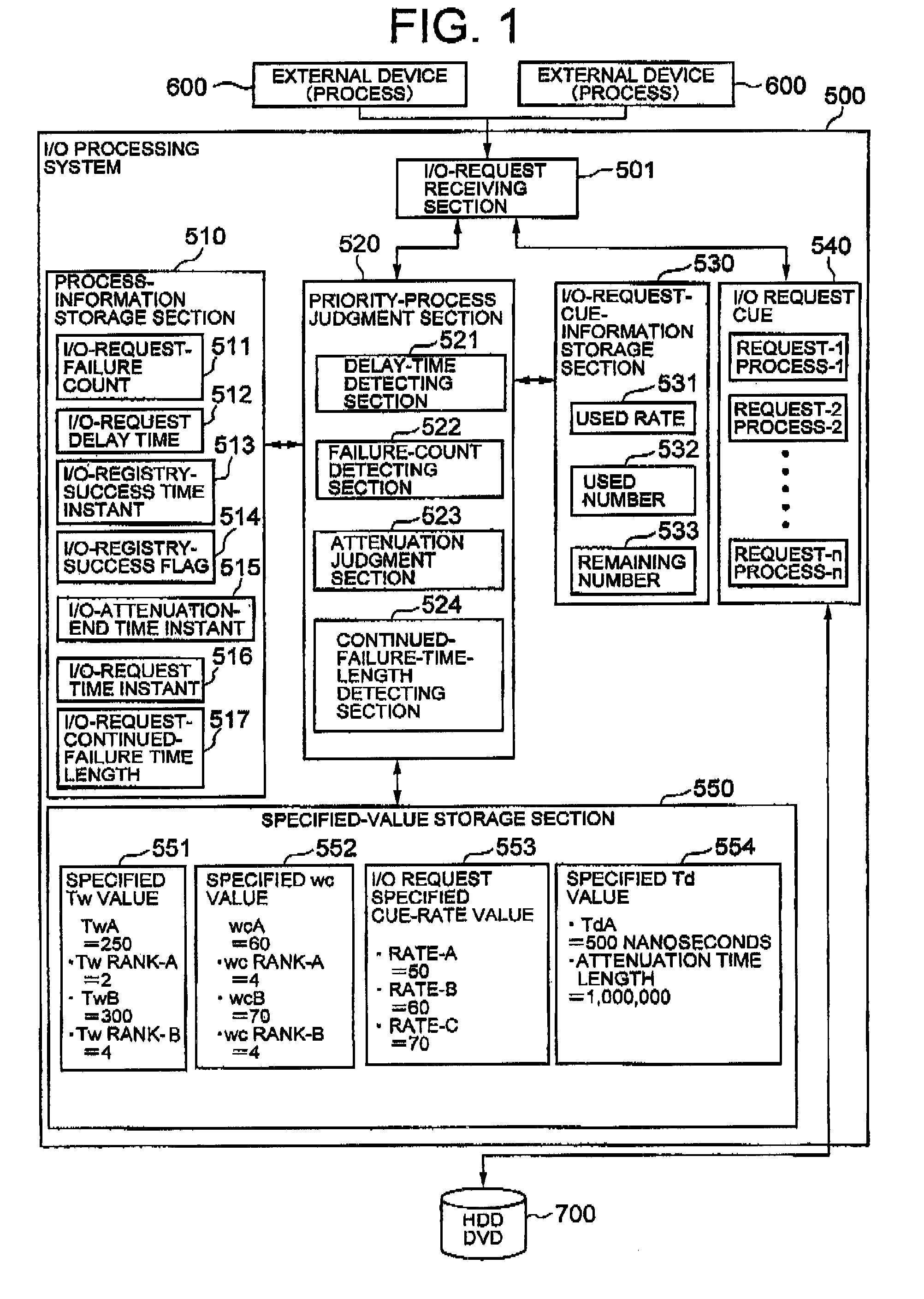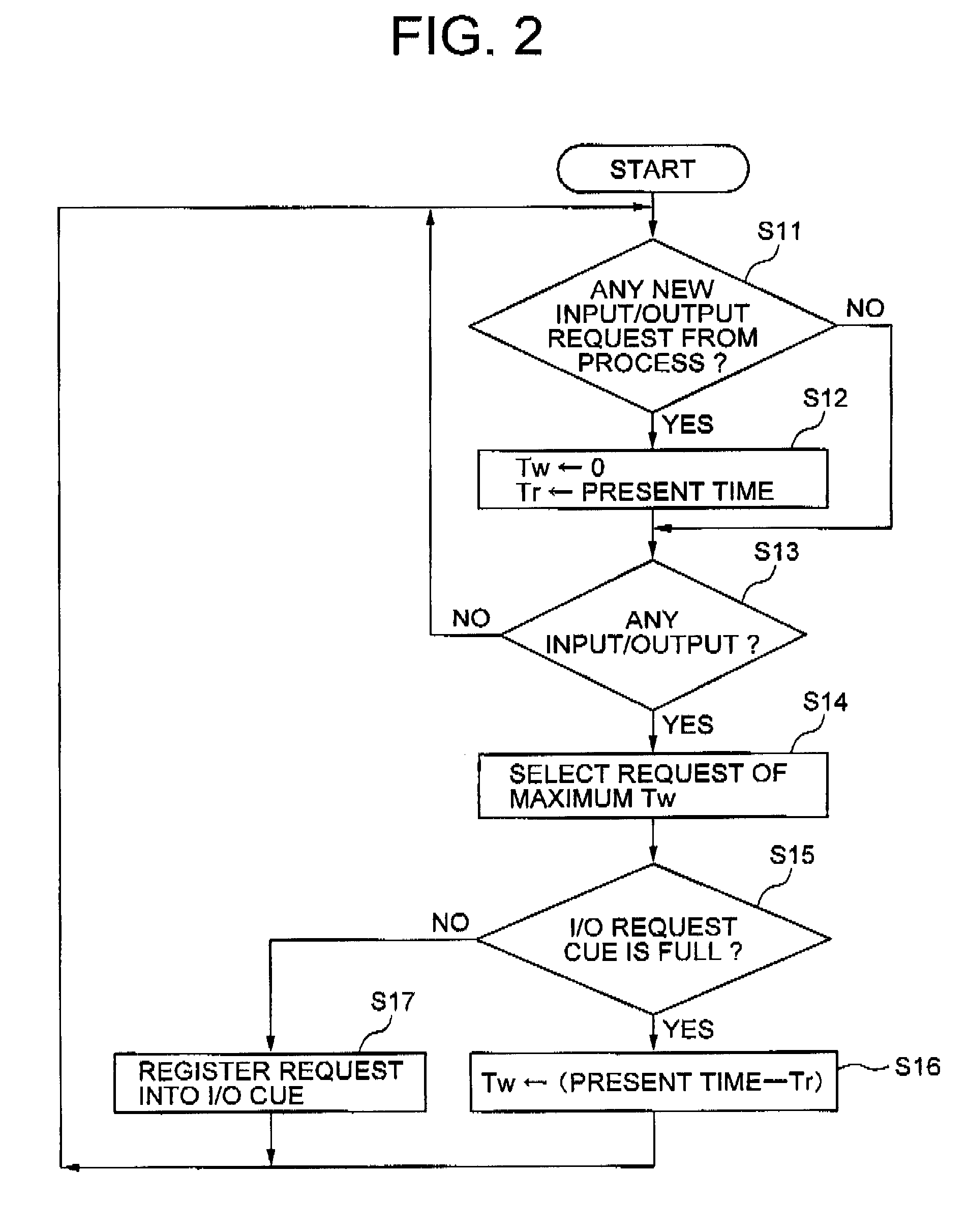I/O-request processing system and method
a processing system and processing method technology, applied in the field of i/o-request processing system and method, to prevent overflow and/or underflow, prevent overflow or underflow of buffer, and reduce the maximum delay time of i/o requests from external devices
- Summary
- Abstract
- Description
- Claims
- Application Information
AI Technical Summary
Benefits of technology
Problems solved by technology
Method used
Image
Examples
Embodiment Construction
[0025]Hereinafter, an embodiment of the present invention will be described in detail with reference to the drawings. FIG. 1 shows the configuration of an I / O-request processing system according to an embodiment of the present invention. The I / O-request processing system 500 includes I / O-request receiving section 501, process-information storage section 510, priority-process judgment section 520, I / O-request-cue-information storage section 530, I / O-request cue 540, and specified-value storage section 550. The I / O-request processing system 500 receives I / O requests that external devices (processes) 600 have issued to an input / output device 700, for example, data storage device 700 such as DVD (digital versatile disk) and hard disk (HDD), registers the I / O request into the I / O-request cue 540, and consecutively delivers the I / O requests stored in the I / O-request cue 540 to the input / output device 700. The I / O-request processing system 500, if it fails in the registry of an I / O request...
PUM
 Login to View More
Login to View More Abstract
Description
Claims
Application Information
 Login to View More
Login to View More - R&D
- Intellectual Property
- Life Sciences
- Materials
- Tech Scout
- Unparalleled Data Quality
- Higher Quality Content
- 60% Fewer Hallucinations
Browse by: Latest US Patents, China's latest patents, Technical Efficacy Thesaurus, Application Domain, Technology Topic, Popular Technical Reports.
© 2025 PatSnap. All rights reserved.Legal|Privacy policy|Modern Slavery Act Transparency Statement|Sitemap|About US| Contact US: help@patsnap.com



